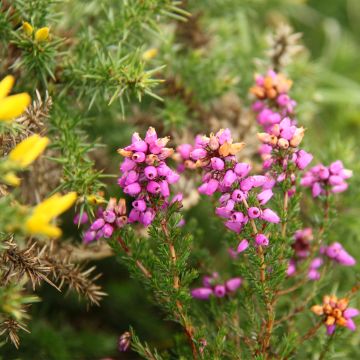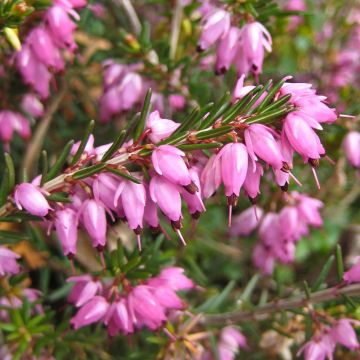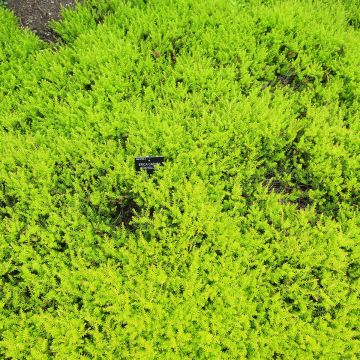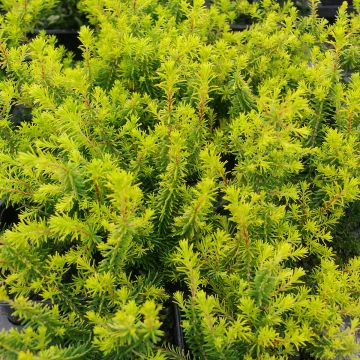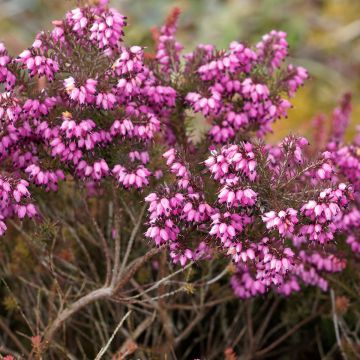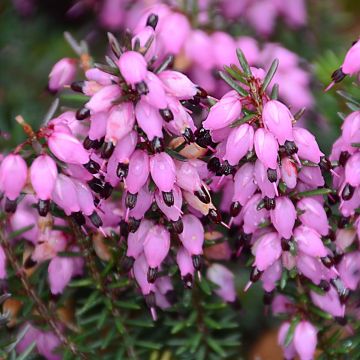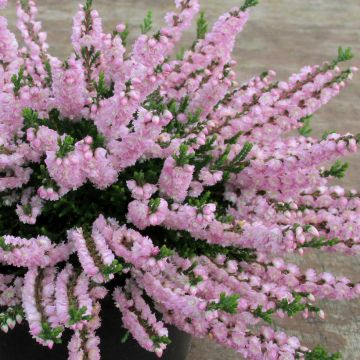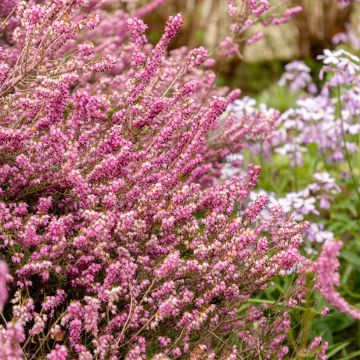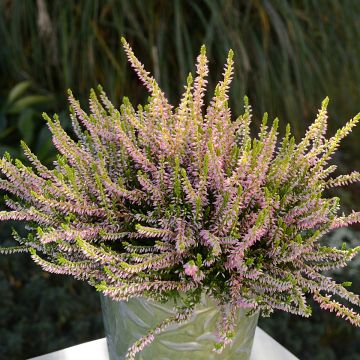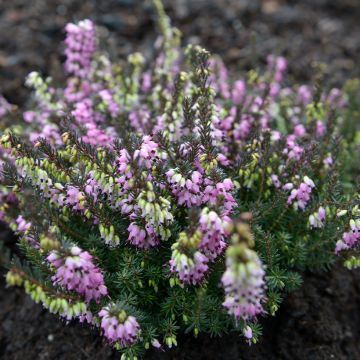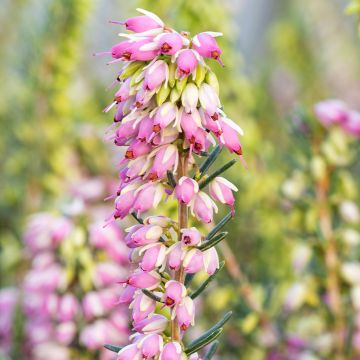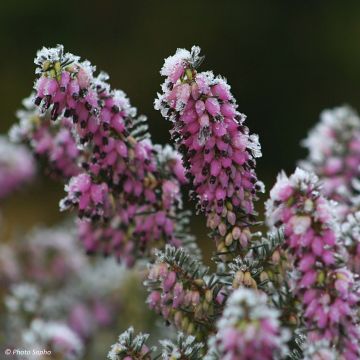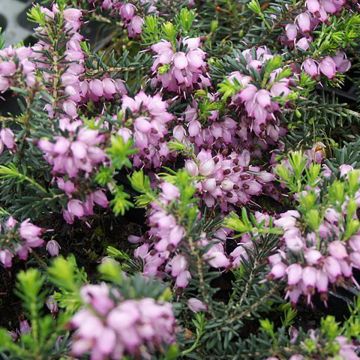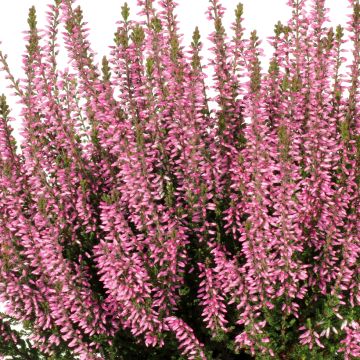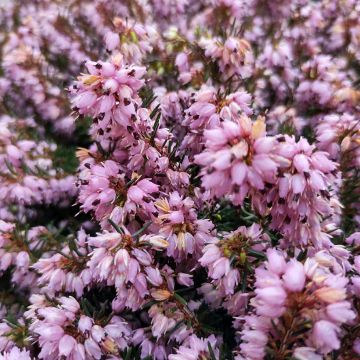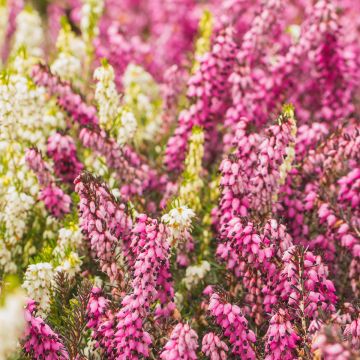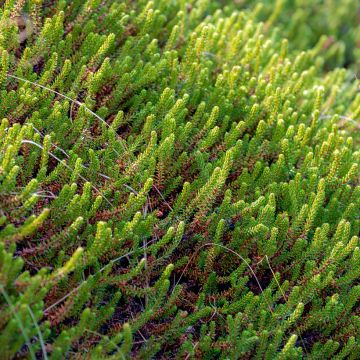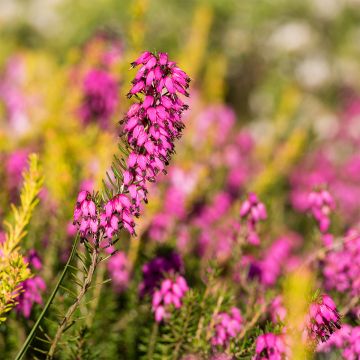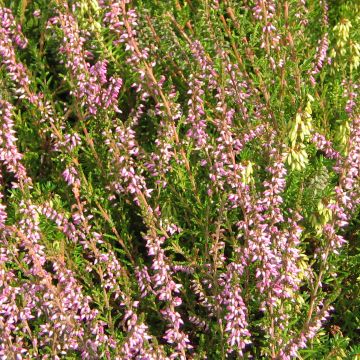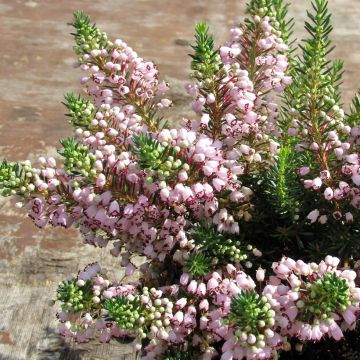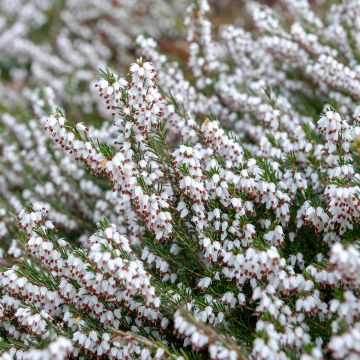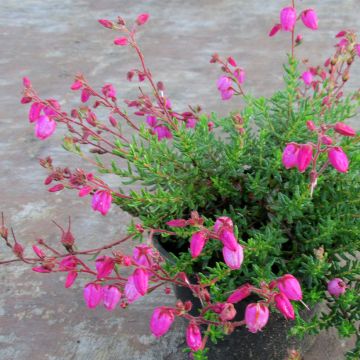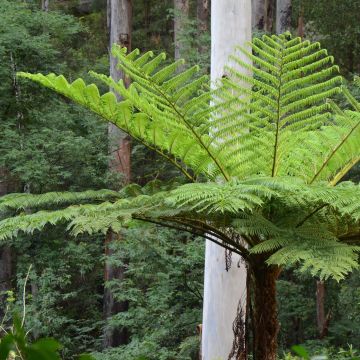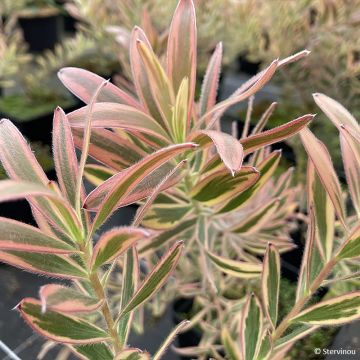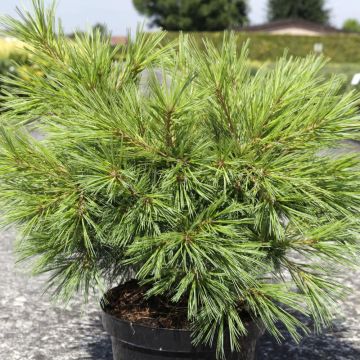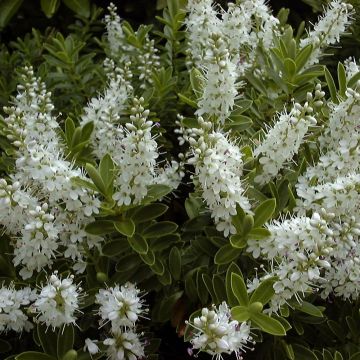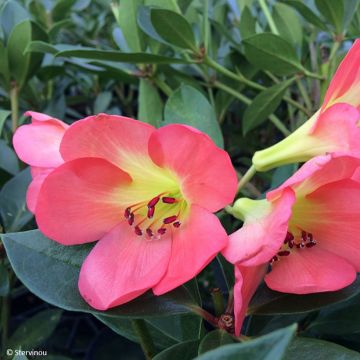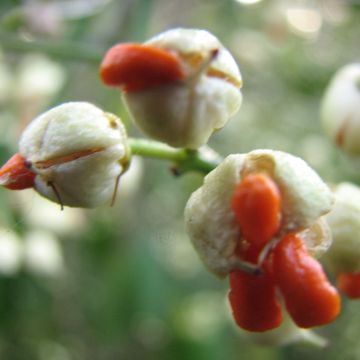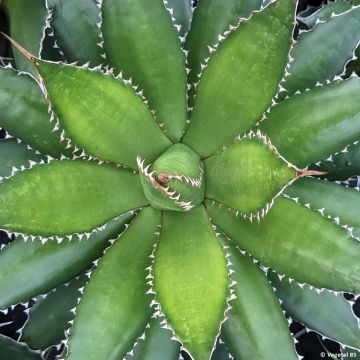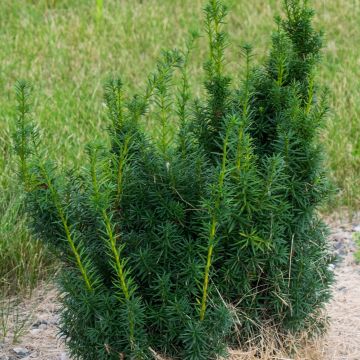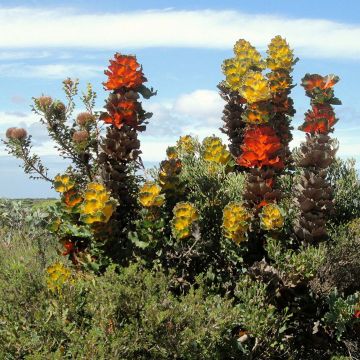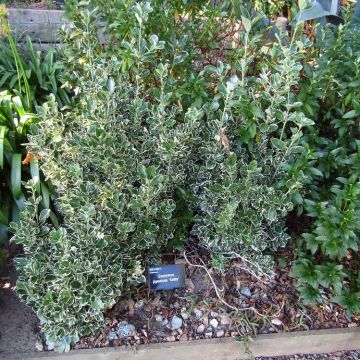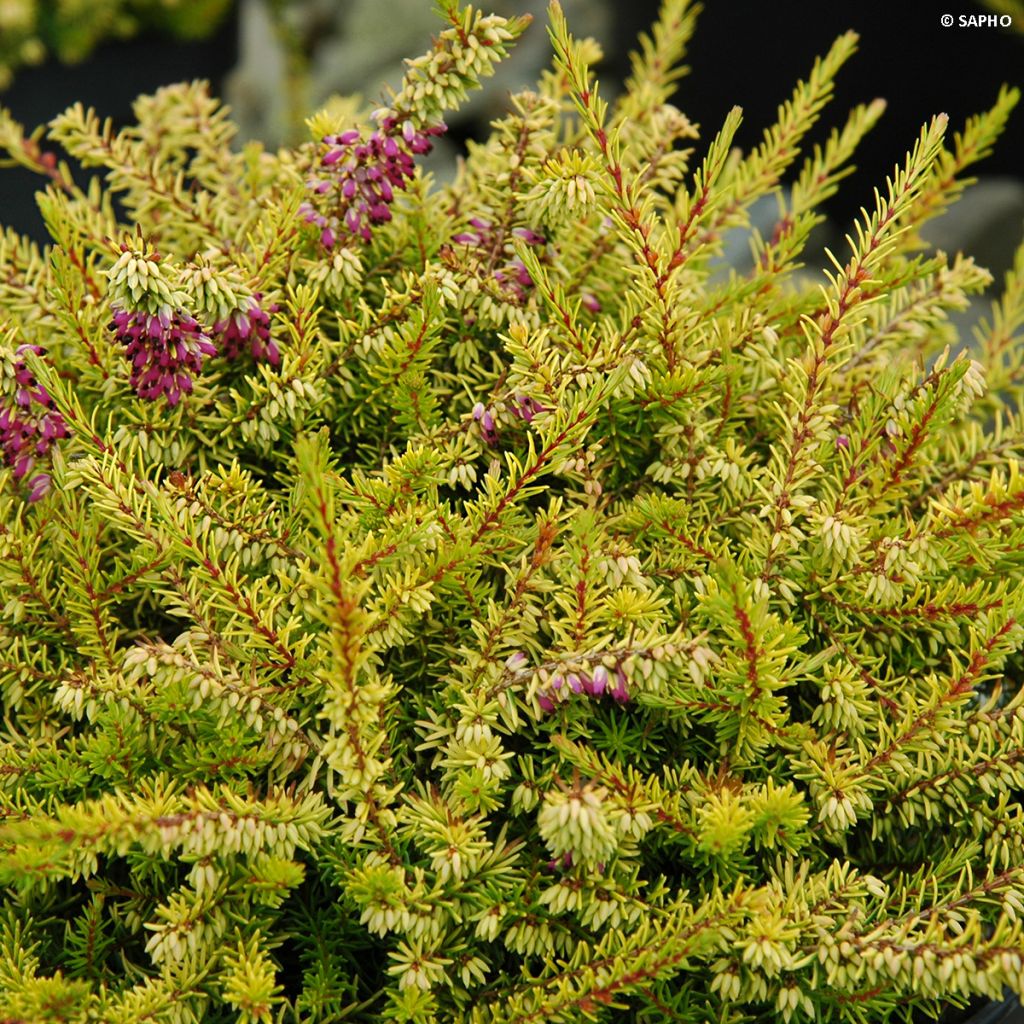

Erica x darleyensis Eva Gold - Bruyère d'hiver
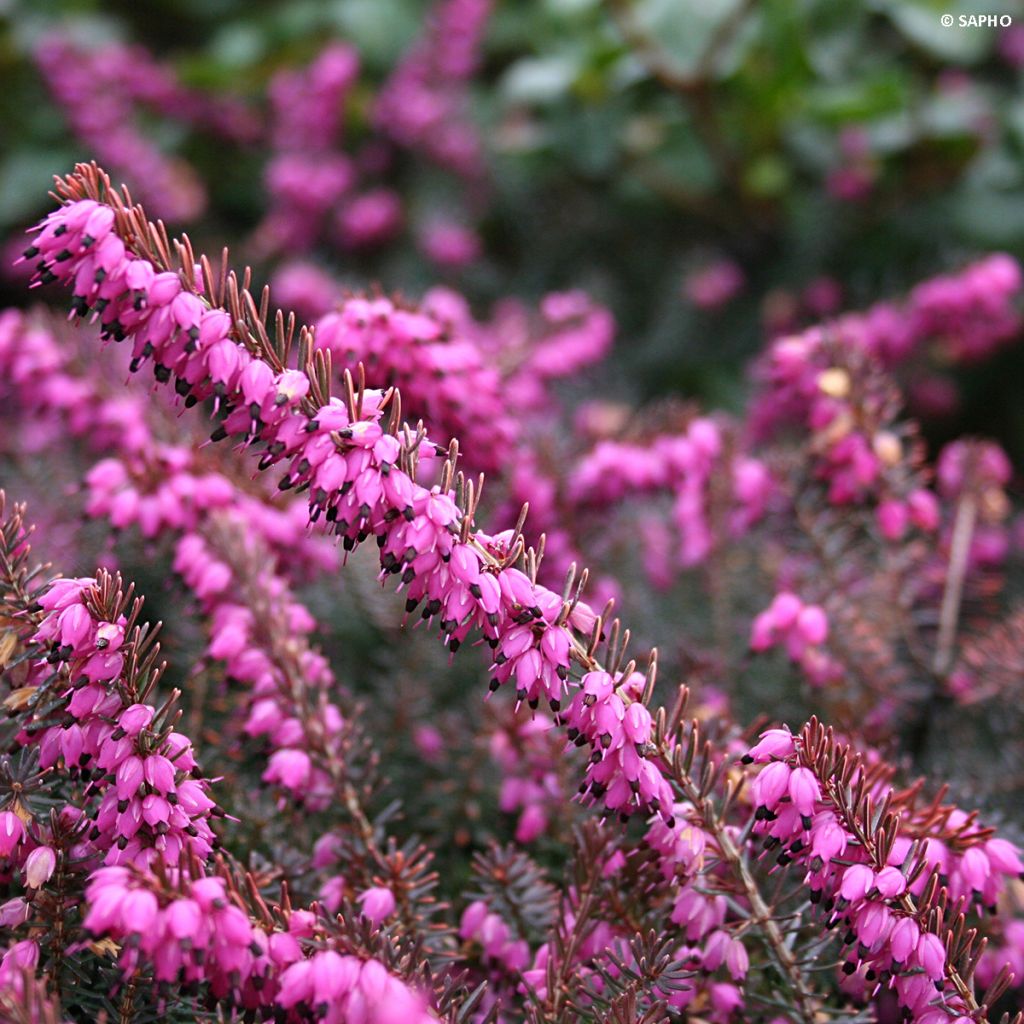

Erica x darleyensis Eva Gold - Bruyère d'hiver
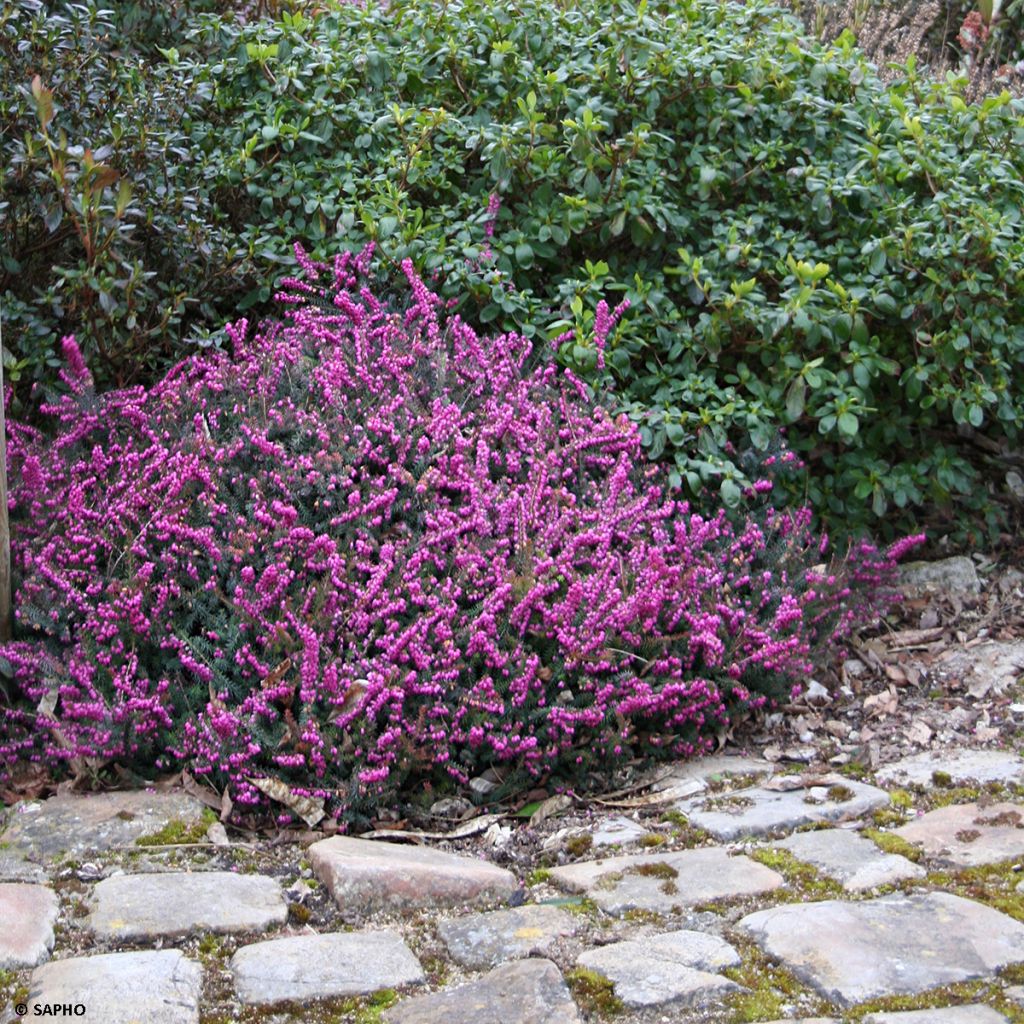

Erica x darleyensis Eva Gold - Bruyère d'hiver
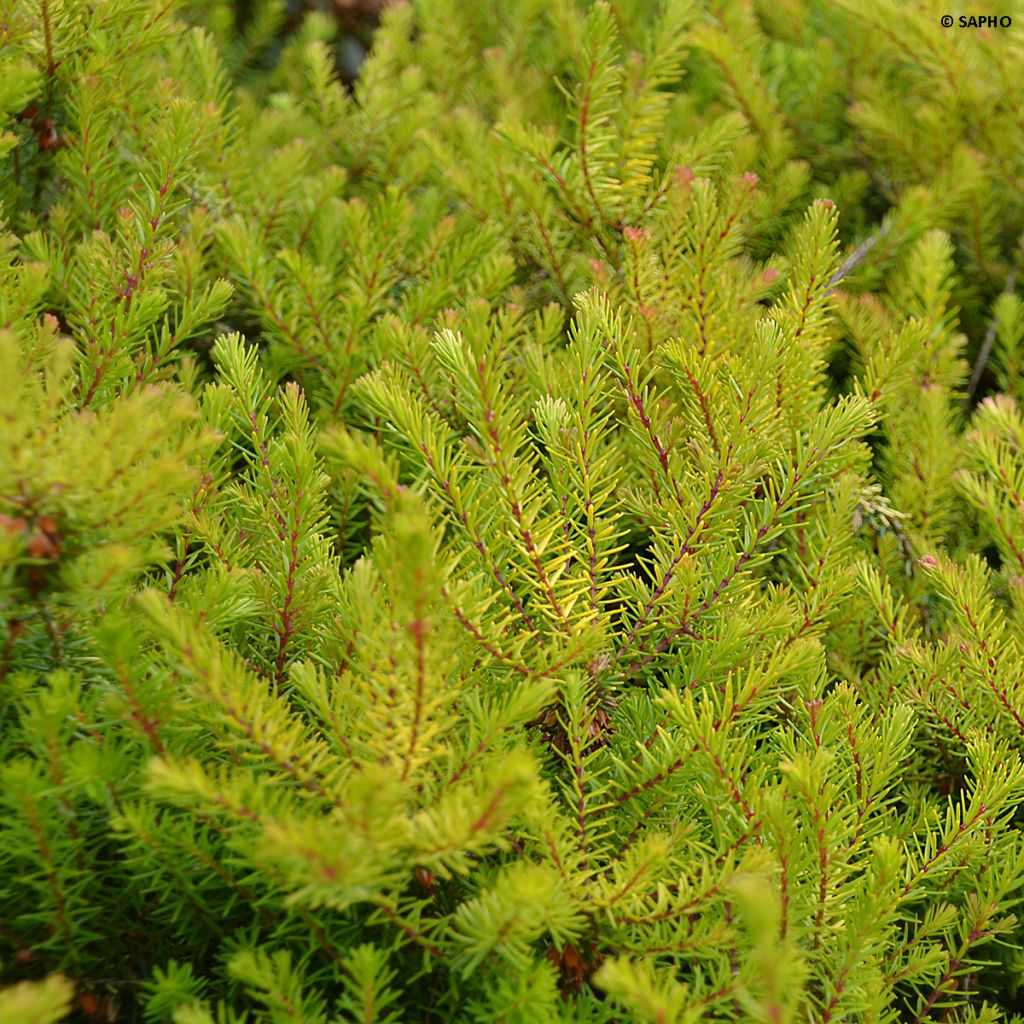

Erica x darleyensis Eva Gold - Bruyère d'hiver
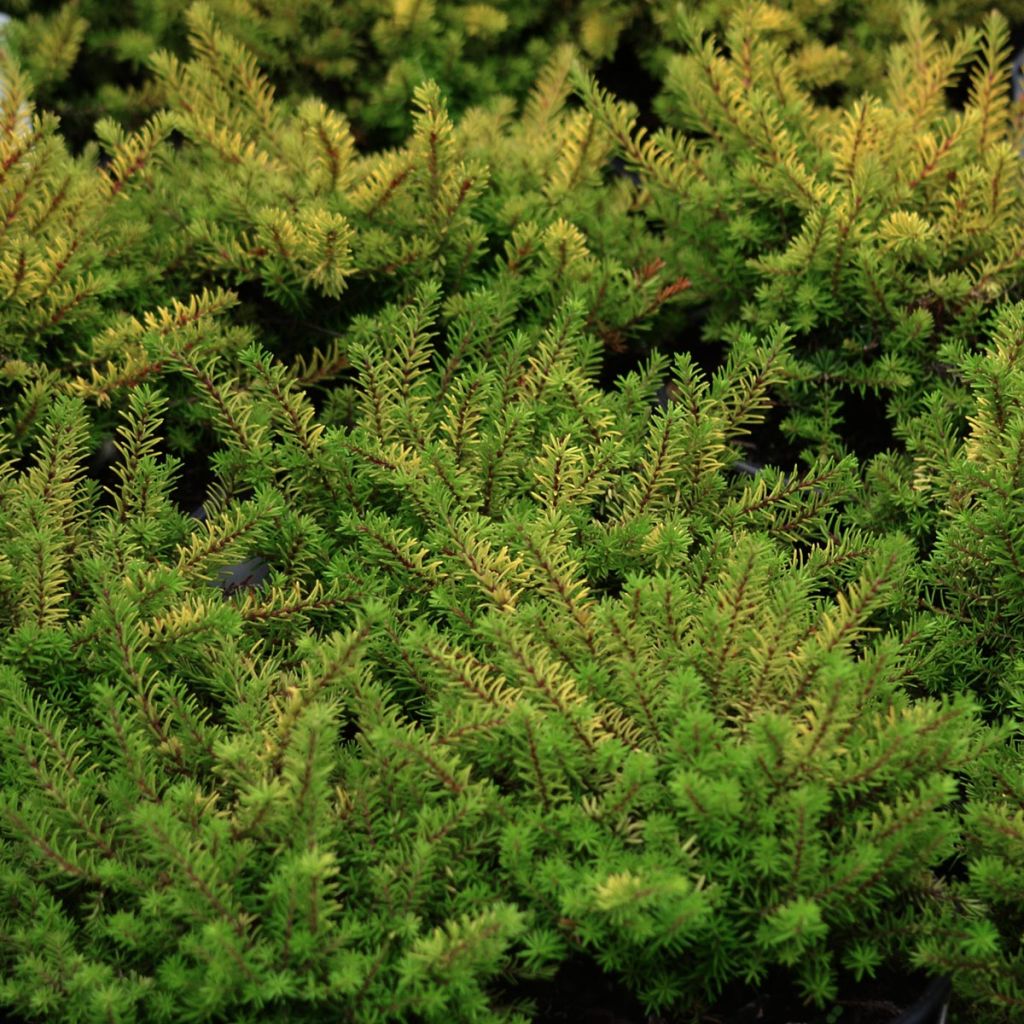

Erica x darleyensis Eva Gold, bruyère d'hiver
Erica darleyensis Eva Gold - Winter Heath
Erica x darleyensis Eva Gold
Winter Heath, Spring Heath, Snow Heather, Alpine Heath
Impeccable, beautiful specimens. I opted for "neck-friendly" packaging, but the pots are made of plastic, and to keep the soil intact during transportation, they are wrapped in plastic..
ann, 27/11/2023
Why not try an alternative variety in stock?
View all →This plant carries a 24 months recovery warranty
More information
We guarantee the quality of our plants for a full growing cycle, and will replace at our expense any plant that fails to recover under normal climatic and planting conditions.
From €5.90 for pickup delivery and €6.90 for home delivery
Express home delivery from €8.90.
From €5.90 for pickup delivery and €6.90 for home delivery
Express home delivery from €8.90.
Does this plant fit my garden?
Set up your Plantfit profile →
Description
Erica x darleyensis Eva Gold is a lovely summer foliage mutation with the golden colour of the excellent winter heather 'Kramer's Rote'. This variety has a compact ball-shaped habit and evergreen foliage with changing colours, and it offers long and abundant magenta flowering during the shortest days of the year. By combining different varieties with staggered flowering, heathers create a patchwork of colour for 6 to 7 months, in the garden or in pots, even in slightly chalky soil for certain varieties.
Erica x darleyensis 'Eva Gold' is a horticultural creation from Pépinières Roué-Cadiou dating back to the year 2000. It is one of the many cultivars resulting from the cross-breeding between Erica carnea, native to mountainous areas of southern and central Europe, thriving on chalky soil, and Erica erigena, acid-loving and native to western Europe. This hybrid combines the larger development of the Scottish species with the more abundant flowering of alpine heather. An evergreen undershrub with a round and dense habit, it reaches approximately 40-50 cm (15.7-19.7 in) in all directions. Its growth is quite slow. Its lifespan is around 10 to 15 years. 'Eva Gold' flowers for a long time, from December to March. The dark purple flower buds open into small urns of magenta-pink with brown stamens. These flowers, 3 to 5 mm (0.1 to 0.2 in) in length, are in long clusters of 3 to 10 cm (1.2 to 3.9 in), scattered along the branches, amidst thin and linear foliage. It is foliage that changes colour throughout the year. Starting with light green in early spring it turns golden yellow in summer and becomes intense green in winter.
Very hardy and undemanding about the nature of the soil, this heather is ideal for rock gardens and winter beds, in the company of other varieties such as 'Winter Belles', 'White Perfection', 'J.H Brummage' and 'Katia'. The Darley heather is also an excellent ground cover, whether alone or associated with creeping dwarf conifers (Juniperus squamata 'Blue Star', Juniperus horizontalis 'Blue Chip', J.repanda...), or ground cover plants such as 'Antennaria dioica 'Rubra'', 'Armeria maritima 'Rubrifolia', or Campanula portenschlagiana for example. It is also a nectar-rich plant, its flowers contain nutritious substances collected by bees who transform them into honey.
Report an error about the product description
Erica darleyensis Eva Gold - Winter Heath in pictures
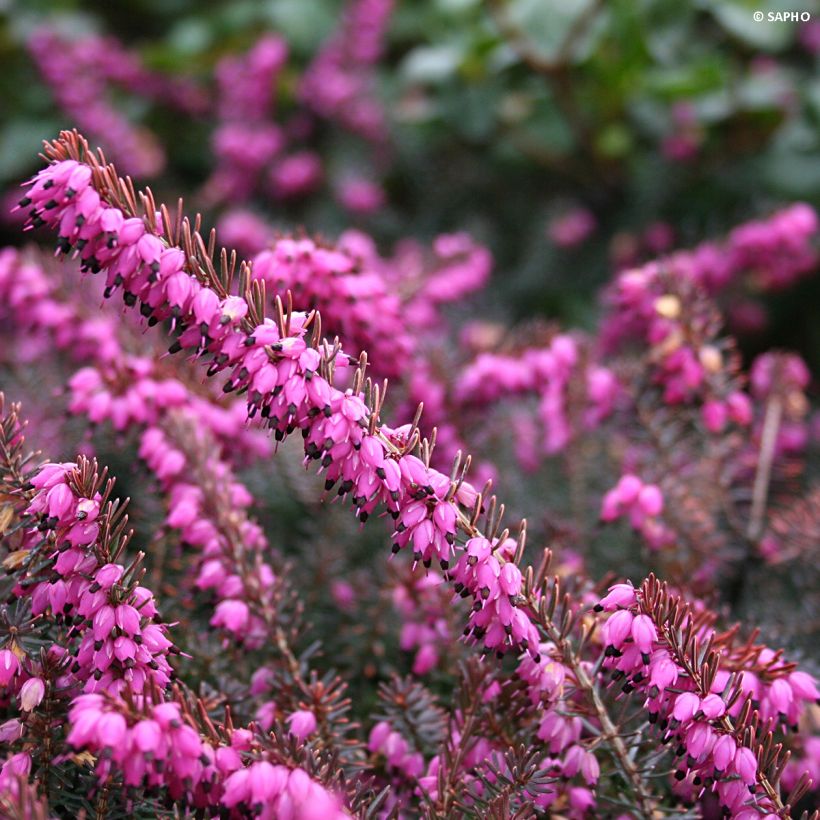

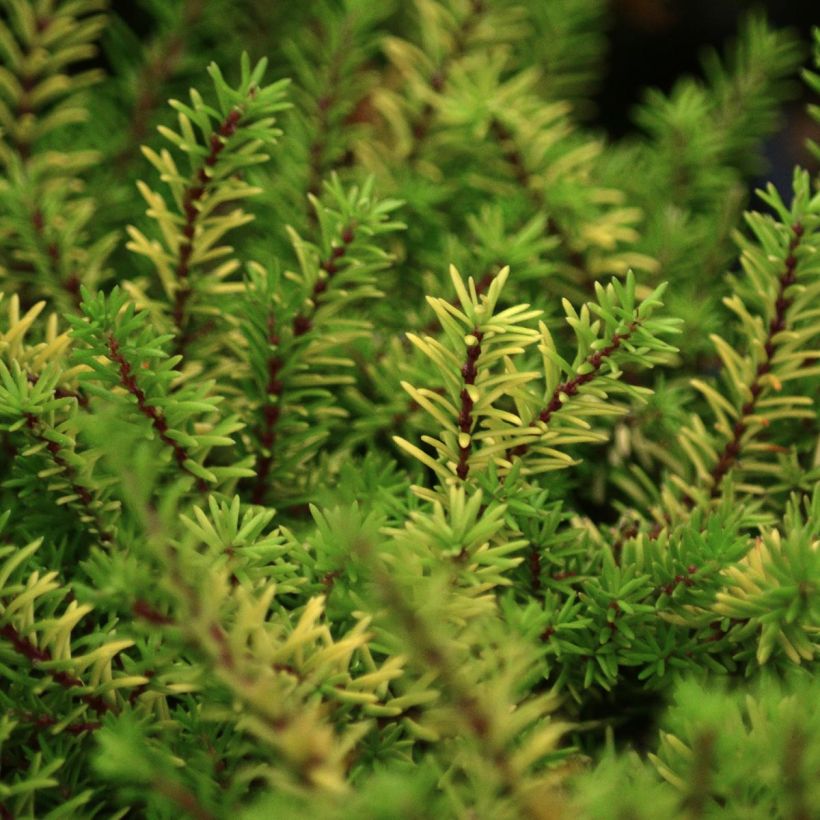

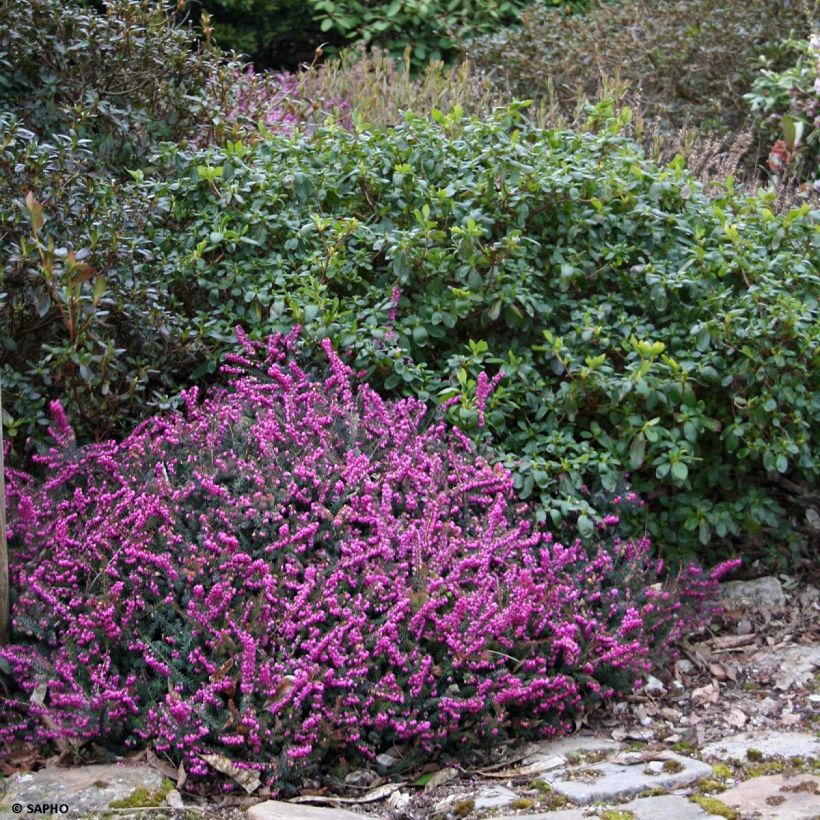

Plant habit
Flowering
Foliage
Botanical data
Erica
x darleyensis
Eva Gold
Ericaceae
Winter Heath, Spring Heath, Snow Heather, Alpine Heath
Cultivar or hybrid
Other Heather
Planting and care
Erica Eva Gold enjoys being in full sun in any type of soil that is not too chalky as long as it is well-drained and light. It is a drought-tolerant plant. Water it once or twice a week depending on the ambient temperature to help it establish. Every year after flowering, prune the faded branches to 2 cm (0.8 in) from the shoot of the previous year. The Erica can be prone to phytophthora, pythium, and rhizoctonia during hot and humid periods.
Planting period
Intended location
Care
-
, onOrder confirmed
Reply from on Promesse de fleurs
Evergreen shrubs
Haven't found what you were looking for?
Hardiness is the lowest winter temperature a plant can endure without suffering serious damage or even dying. However, hardiness is affected by location (a sheltered area, such as a patio), protection (winter cover) and soil type (hardiness is improved by well-drained soil).

Photo Sharing Terms & Conditions
In order to encourage gardeners to interact and share their experiences, Promesse de fleurs offers various media enabling content to be uploaded onto its Site - in particular via the ‘Photo sharing’ module.
The User agrees to refrain from:
- Posting any content that is illegal, prejudicial, insulting, racist, inciteful to hatred, revisionist, contrary to public decency, that infringes on privacy or on the privacy rights of third parties, in particular the publicity rights of persons and goods, intellectual property rights, or the right to privacy.
- Submitting content on behalf of a third party;
- Impersonate the identity of a third party and/or publish any personal information about a third party;
In general, the User undertakes to refrain from any unethical behaviour.
All Content (in particular text, comments, files, images, photos, videos, creative works, etc.), which may be subject to property or intellectual property rights, image or other private rights, shall remain the property of the User, subject to the limited rights granted by the terms of the licence granted by Promesse de fleurs as stated below. Users are at liberty to publish or not to publish such Content on the Site, notably via the ‘Photo Sharing’ facility, and accept that this Content shall be made public and freely accessible, notably on the Internet.
Users further acknowledge, undertake to have ,and guarantee that they hold all necessary rights and permissions to publish such material on the Site, in particular with regard to the legislation in force pertaining to any privacy, property, intellectual property, image, or contractual rights, or rights of any other nature. By publishing such Content on the Site, Users acknowledge accepting full liability as publishers of the Content within the meaning of the law, and grant Promesse de fleurs, free of charge, an inclusive, worldwide licence for the said Content for the entire duration of its publication, including all reproduction, representation, up/downloading, displaying, performing, transmission, and storage rights.
Users also grant permission for their name to be linked to the Content and accept that this link may not always be made available.
By engaging in posting material, Users consent to their Content becoming automatically accessible on the Internet, in particular on other sites and/or blogs and/or web pages of the Promesse de fleurs site, including in particular social pages and the Promesse de fleurs catalogue.
Users may secure the removal of entrusted content free of charge by issuing a simple request via our contact form.
The flowering period indicated on our website applies to countries and regions located in USDA zone 8 (France, the United Kingdom, Ireland, the Netherlands, etc.)
It will vary according to where you live:
- In zones 9 to 10 (Italy, Spain, Greece, etc.), flowering will occur about 2 to 4 weeks earlier.
- In zones 6 to 7 (Germany, Poland, Slovenia, and lower mountainous regions), flowering will be delayed by 2 to 3 weeks.
- In zone 5 (Central Europe, Scandinavia), blooming will be delayed by 3 to 5 weeks.
In temperate climates, pruning of spring-flowering shrubs (forsythia, spireas, etc.) should be done just after flowering.
Pruning of summer-flowering shrubs (Indian Lilac, Perovskia, etc.) can be done in winter or spring.
In cold regions as well as with frost-sensitive plants, avoid pruning too early when severe frosts may still occur.
The planting period indicated on our website applies to countries and regions located in USDA zone 8 (France, United Kingdom, Ireland, Netherlands).
It will vary according to where you live:
- In Mediterranean zones (Marseille, Madrid, Milan, etc.), autumn and winter are the best planting periods.
- In continental zones (Strasbourg, Munich, Vienna, etc.), delay planting by 2 to 3 weeks in spring and bring it forward by 2 to 4 weeks in autumn.
- In mountainous regions (the Alps, Pyrenees, Carpathians, etc.), it is best to plant in late spring (May-June) or late summer (August-September).
The harvesting period indicated on our website applies to countries and regions in USDA zone 8 (France, England, Ireland, the Netherlands).
In colder areas (Scandinavia, Poland, Austria...) fruit and vegetable harvests are likely to be delayed by 3-4 weeks.
In warmer areas (Italy, Spain, Greece, etc.), harvesting will probably take place earlier, depending on weather conditions.
The sowing periods indicated on our website apply to countries and regions within USDA Zone 8 (France, UK, Ireland, Netherlands).
In colder areas (Scandinavia, Poland, Austria...), delay any outdoor sowing by 3-4 weeks, or sow under glass.
In warmer climes (Italy, Spain, Greece, etc.), bring outdoor sowing forward by a few weeks.

































